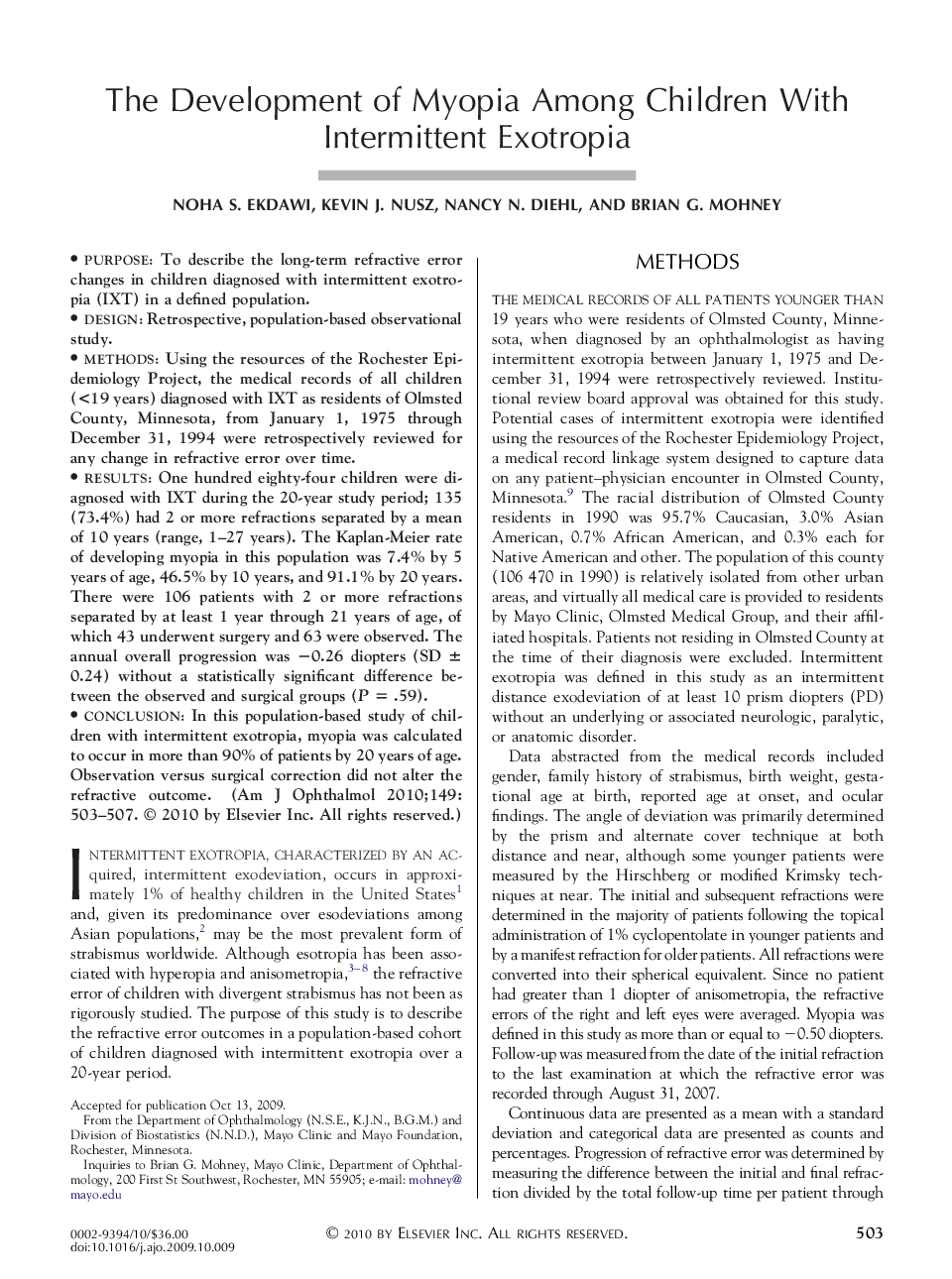| کد مقاله | کد نشریه | سال انتشار | مقاله انگلیسی | نسخه تمام متن |
|---|---|---|---|---|
| 4003991 | 1602187 | 2010 | 5 صفحه PDF | دانلود رایگان |

PurposeTo describe the long-term refractive error changes in children diagnosed with intermittent exotropia (IXT) in a defined population.DesignRetrospective, population-based observational study.MethodsUsing the resources of the Rochester Epidemiology Project, the medical records of all children (<19 years) diagnosed with IXT as residents of Olmsted County, Minnesota, from January 1, 1975 through December 31, 1994 were retrospectively reviewed for any change in refractive error over time.ResultsOne hundred eighty-four children were diagnosed with IXT during the 20-year study period; 135 (73.4%) had 2 or more refractions separated by a mean of 10 years (range, 1–27 years). The Kaplan-Meier rate of developing myopia in this population was 7.4% by 5 years of age, 46.5% by 10 years, and 91.1% by 20 years. There were 106 patients with 2 or more refractions separated by at least 1 year through 21 years of age, of which 43 underwent surgery and 63 were observed. The annual overall progression was −0.26 diopters (SD ± 0.24) without a statistically significant difference between the observed and surgical groups (P = .59).ConclusionIn this population-based study of children with intermittent exotropia, myopia was calculated to occur in more than 90% of patients by 20 years of age. Observation versus surgical correction did not alter the refractive outcome.
Journal: American Journal of Ophthalmology - Volume 149, Issue 3, March 2010, Pages 503–507